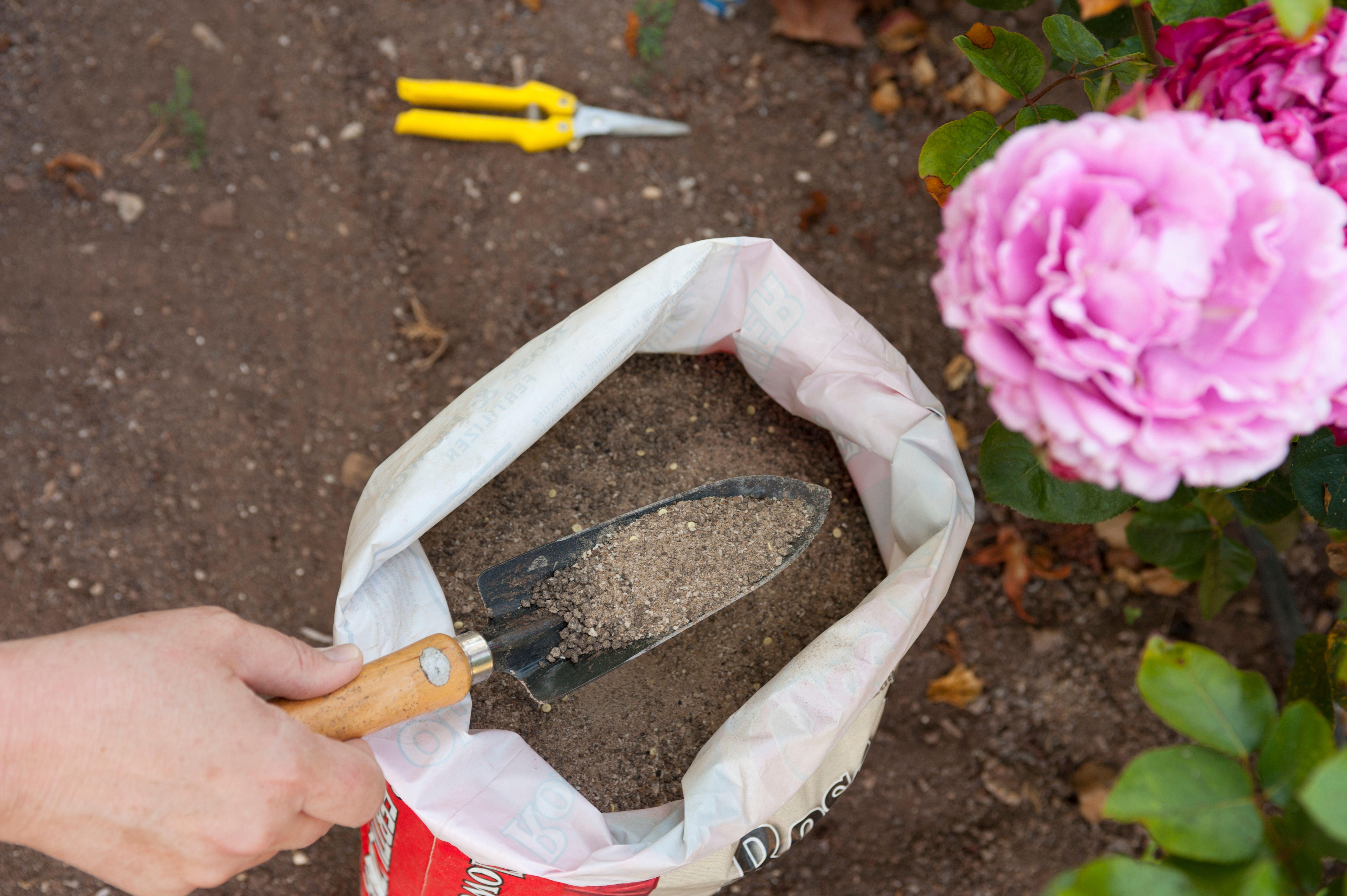Compared to synthetic products, organic fertilizers have several perks. For starters, you can make some of them at home for free. Organic products are also less likely to cause fertilizer burn or build up in the soil and create ongoing issues for garden plants or lawns. And if you want to garden organically, these natural products are what you'll rely on to provide plant nutrients. Here are some the best organic fertilizers to use in your garden, plus tips on how to select the right product for the plants you want to grow.
1. Compost
Compost is an all-purpose, slow-release soil amendment that provides a wide range of nutrients to plants while improving the health and structure of the soil. One of the best things about compost is that it is easy to make at home for free from kitchen scraps or yard waste. However, homemade compost is only as good as the ingredients you put into it, so it’s essential to compost a variety of organic matter and to know how to compost correctly to achieve the highest quality end product.
Unlike some fertilizers, compost can be used on nearly any plant. It works even better when applied in conjunction with another organic fertilizer. To use, simply mix compost into the soil when preparing a new bed, or apply it as a top-dressing, side-dressing, or potting mix additive.
2. Manure
Manure from chickens, cows, and other livestock is used just like compost to enrich soil with nutrients and enhance soil structure. The caveat is that manure often has a high nitrogen and salt content that potentially burns plants and causes other issues.
To avoid problems, make sure to compost or age manure properly before use. Only source manure from organic farms where livestock were not fed hay treated with herbicides.
3. Worm Castings
Like compost, it's easy to make worm castings at home for free to be used on houseplants or garden plants. All you need is a worm bin, composting worms, and kitchen scraps, which the worms will slowly but surely turn into worm castings.
Compared to compost or manure, worm castings are more nutrient-dense, and you don't need to use as much of them to see the same great results in your plants.
Related
4. Fish Meal or Emulsion
Fish meal and emulsion are both made from the byproducts of the fishing industry, but they vary a bit. Fish meal generally comes in a powdered or granular form and is mixed into the soil or side-dressed around plants. Fish emulsion is a liquid that’s diluted in water and applied to plants with a garden sprayer or watering can.
Both products contain plenty of nitrogen, potassium, and phosphorus. The drawback is the smell so they are not the best choice for garden beds around a patio or for indoor use.
5. Alfalfa Meal
Available in powder and pellet form, alfalfa meal is a great option if you don’t want to use animal products in your garden. This organic fertilizer contains a good amount of nitrogen and potassium. Alfalfa meal has a sweet and pleasant smell when applied.
To cut down on cost, buy alfalfa meal fertilizer in bulk from seed companies or livestock feed stores.
6. Blood Meal
Blood meal is one of the best organic sources of nitrogen, which makes it a top fertilizer for leafy greens and heavy-feeding plants like tomatoes. After adding blood meal to the soil, it releases nitrogen to plants over two to six weeks. For comparison, many synthetic fertilizers and other organic fertilizers, such as fish emulsion, only supply nitrogen to plants for about two weeks.
Blood meal potentially deters deer and other wildlife; however, it also tempts dogs to lick it off the soil, which can make them sick.
7. Kelp Meal
Kelp meal is often included in fish meal or fish emulsion blends, but it's also sold on its own in powdered or liquid form. Although this product doesn’t contain much nitrogen, potassium, or phosphorus, it is filled with plant micro-nutrients that are otherwise difficult to source. If you live near the coast, you can also collect your own seaweed and use it in your garden for a homemade version of kelp meal.
8. Soybean Meal
Another plant-based option, soybean meal is produced from the byproducts of the soy industry. It’s often sold in bulk in seed catalogs and livestock feed stores. This slow-release fertilizer takes a while to become incorporated into the soil, but it’s a good source of nitrogen and other nutrients. Typically, soybean meal is applied either as a top-dressing or side-dressing to gardens, but it can inhibit seed germination and should only be applied a few weeks after planting seeds.
9. Bat Guano
Bat guano is made from the droppings of bats that are collected from caves. They are dried and powdered, and, depending on the product, extra nitrogen or phosphorus may be added. Although bat guano takes a while to start working, it is versatile and can be used as a powder or brewed in water and applied as a liquid fertilizer or foliar spray.
10. Bone Meal
Made from dried and powdered bone, bone meal is particularly high in phosphorus, an essential nutrient for healthy root growth. As a result, bone meal is often mixed into the soil before planting bulbs and root veggies, but it is valuable for other plants, too. If your tomatoes are suffering from blossom end rot, and the cause is not irregular watering, applying bone meal may help.



